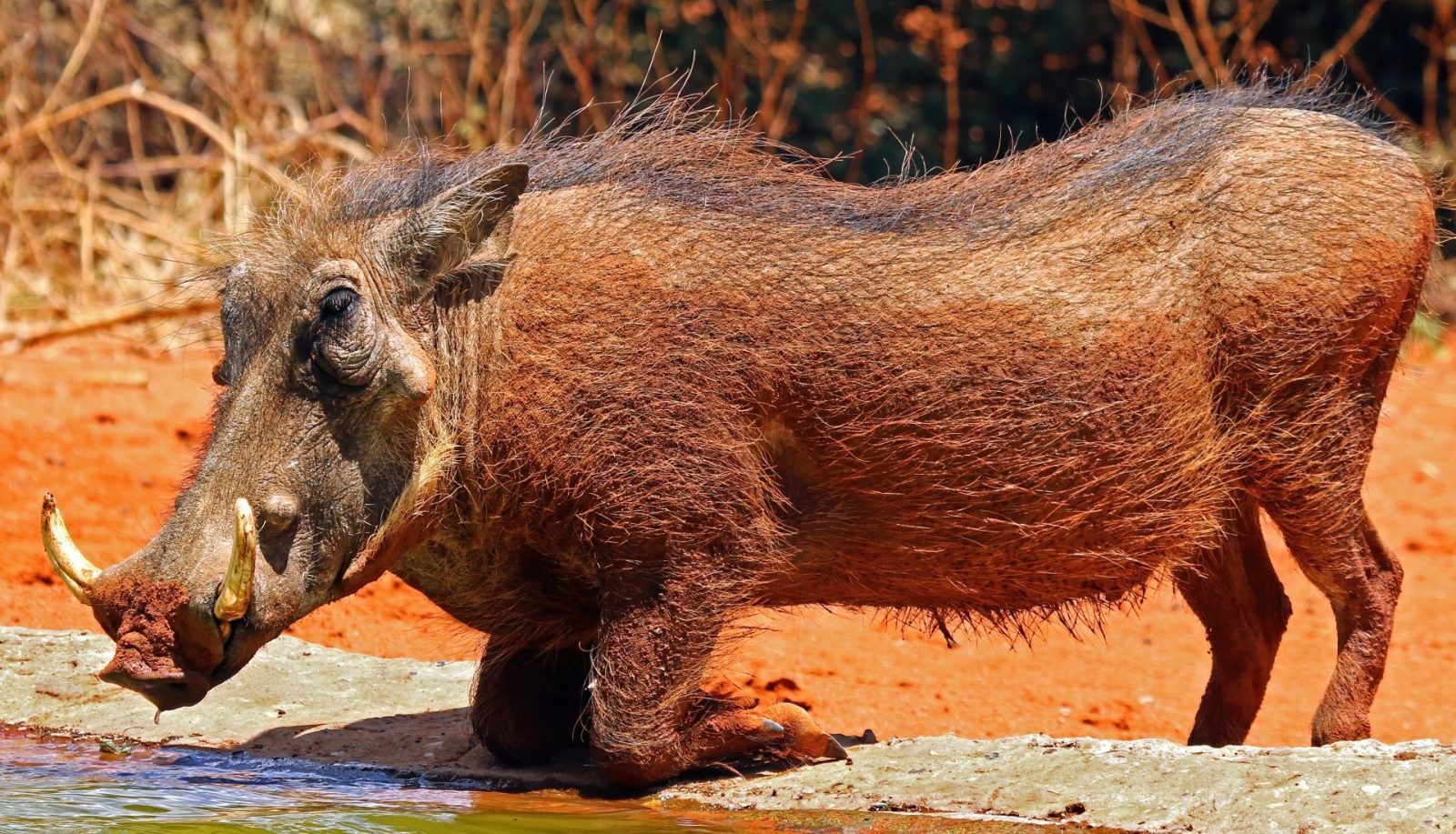
Common Warthog

- Green shows the current agreed range of the common warthog, with the red areas considered as possible range, or accidental records
The common warthog was originally given the scientific name which is now used for the desert warthog (now considered as a species in its own right. The females form sounders of up to 10, which include several females and their offspring. The males form similar groups when they are young, though adults live a solitary life. When they have young, generally a litter is around 2-4 (though it can be as large as 8). Generally, survival rate to adulthood, is rarely above 50%. They have a beneficial relationship with banded mongoose, where they will visit, and allow the mongoose to walk all over their body and remove parasites (which the mongoose eat). The video at the bottom of the page shows this.
Weighing between 60 and 150kg, the warthog has 2 tusks protruding from their mouth on each side of their head. The lower one rubs against the upper one, every time that the mouth opens or closes. As a result it is kept very sharp. The upper tusks can grow to be 25cm long.
Tusks are only used for fighting, whether between males for dominance, but also against predators such as lions and leopards. Because the lower ones are so sharp these are also dangerous when used for defence or aggression. A large male is so well defended by its tusks, that lions, leopards and other predators rarely try to take on a male. Females also have tusks, which means that predators rarely take on fully grown adults (without some extra complication, such as injury). Given the size of litters, it is quite common that a young will be taken before the adult is fully aware.
The warthog’s main predators are humans, lions, leopards, cheetahs, crocodiles, wild dogs and hyenas. Birds of prey such as Verreaux’s eagle owls and martial eagles sometimes prey on piglets. Obviously it depends on size and strength as to how often these animals will try to attack anything other than a piglet.
- Nolan warthog (P. a. africanus) Gmelin, 1788 – Burkina Faso, Ivory Coast, Democratic Republic of the Congo, Ethiopia, Ghana, Guinea-Bissau, Chad, Mauritania, Nigeria, Senegal, Sudan
- Eritrean warthog (P. a. aeliani) Cretzschmar, 1828 – Eritrea, Ethiopia, Djibouti, Somalia
- Central African warthog (P. a. massaicus) Lönnberg, 1908 – Kenya, Tanzania
- Southern warthog (P. a. sundevallii) Lönnberg, 1908 – Angola, Botswana, Namibia, South Africa, Zimbabwe










